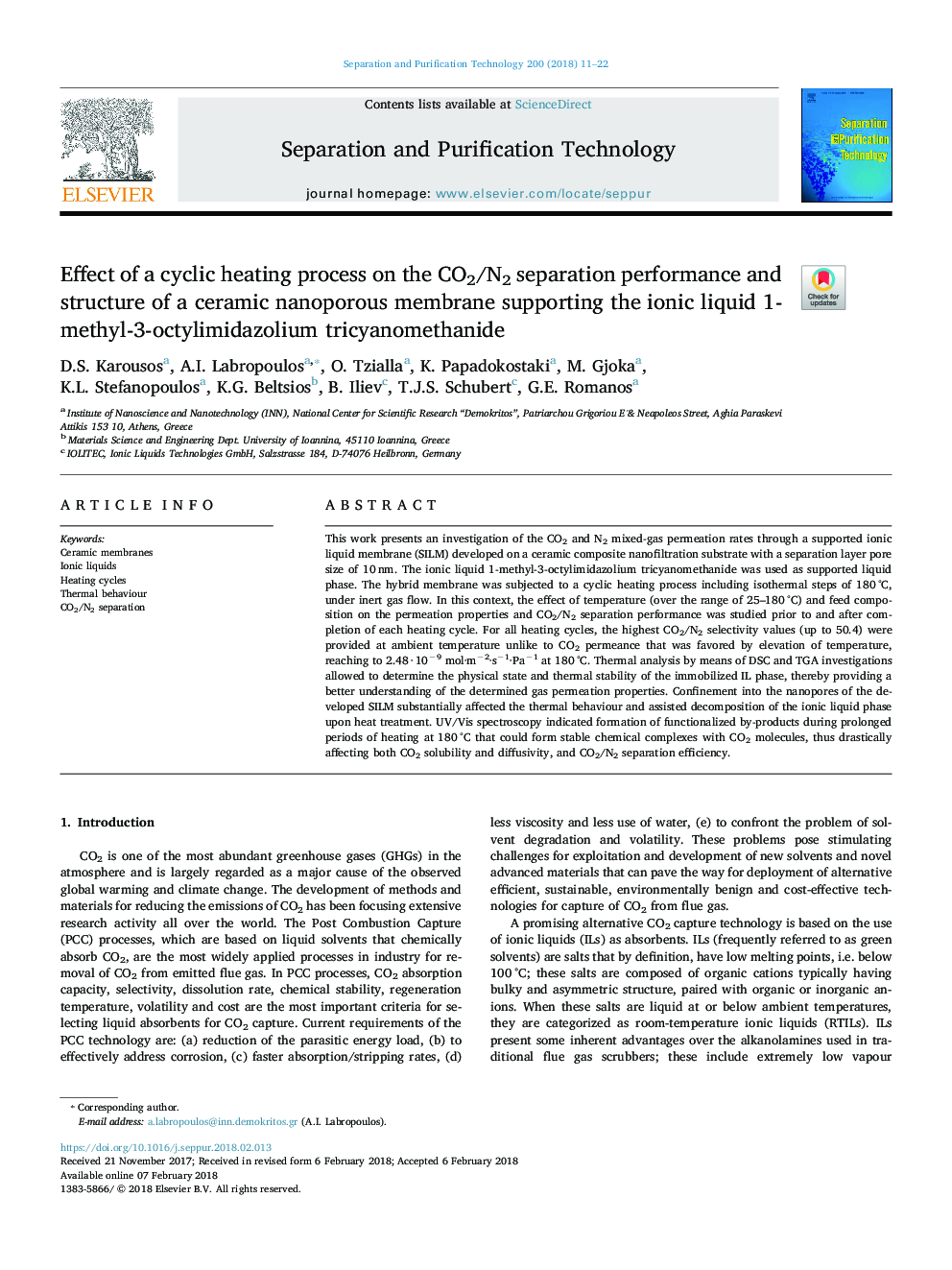| Article ID | Journal | Published Year | Pages | File Type |
|---|---|---|---|---|
| 7043793 | Separation and Purification Technology | 2018 | 12 Pages |
Abstract
This work presents an investigation of the CO2 and N2 mixed-gas permeation rates through a supported ionic liquid membrane (SILM) developed on a ceramic composite nanofiltration substrate with a separation layer pore size of 10â¯nm. The ionic liquid 1-methyl-3-octylimidazolium tricyanomethanide was used as supported liquid phase. The hybrid membrane was subjected to a cyclic heating process including isothermal steps of 180â¯Â°C, under inert gas flow. In this context, the effect of temperature (over the range of 25-180â¯Â°C) and feed composition on the permeation properties and CO2/N2 separation performance was studied prior to and after completion of each heating cycle. For all heating cycles, the highest CO2/N2 selectivity values (up to 50.4) were provided at ambient temperature unlike to CO2 permeance that was favored by elevation of temperature, reaching to 2.48â¯Â·â¯10â9 mol·mâ2·sâ1·Paâ1 at 180â¯Â°C. Thermal analysis by means of DSC and TGA investigations allowed to determine the physical state and thermal stability of the immobilized IL phase, thereby providing a better understanding of the determined gas permeation properties. Confinement into the nanopores of the developed SILM substantially affected the thermal behaviour and assisted decomposition of the ionic liquid phase upon heat treatment. UV/Vis spectroscopy indicated formation of functionalized by-products during prolonged periods of heating at 180â¯Â°C that could form stable chemical complexes with CO2 molecules, thus drastically affecting both CO2 solubility and diffusivity, and CO2/N2 separation efficiency.
Related Topics
Physical Sciences and Engineering
Chemical Engineering
Filtration and Separation
Authors
D.S. Karousos, A.I. Labropoulos, O. Tzialla, K. Papadokostaki, M. Gjoka, K.L. Stefanopoulos, K.G. Beltsios, B. Iliev, T.J.S. Schubert, G.E. Romanos,
